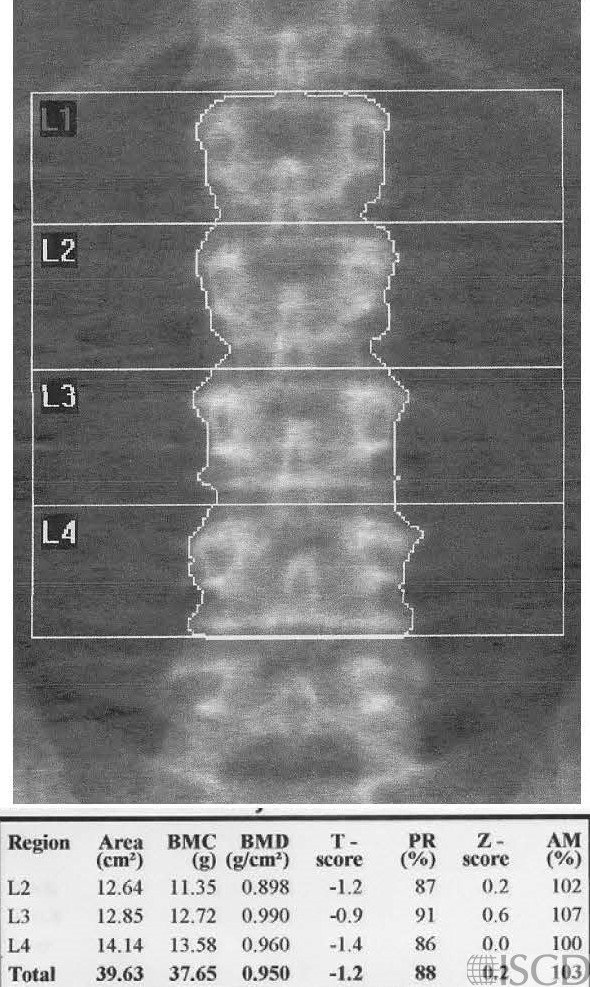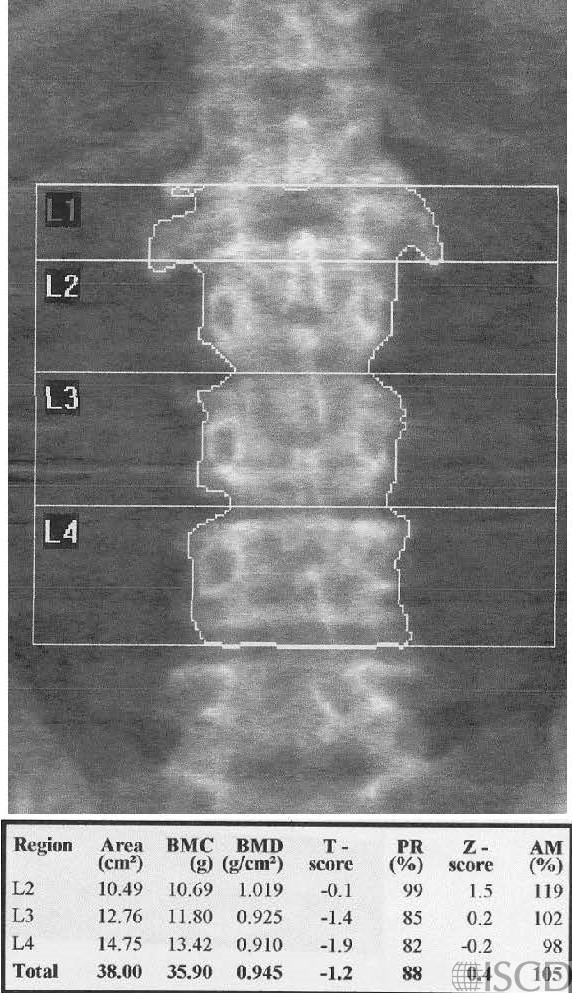Compression Fracture
This is the baseline Hologic lumbar spine DXA scan showing no compression fractures.

The follow-up DXA scan below shows a L1 fracture. This is accompanying lateral spine radiograph which shows the new L1 compression fracture on follow-up.

The follow-up DXA scan after 2 years shows that the height of L1 is shortened and that there is a compression fracture. L1 is omitted from the baseline and previous DXA scan because of the presence of compression.

There is a baseline DXA scan showing no compression fracture and the intervening DXA scan, completed after 2 years, shows a new L1 compression fracture.
Sarah L Morgan, MD, RD, CCD, The University of Alabama at Birmingham